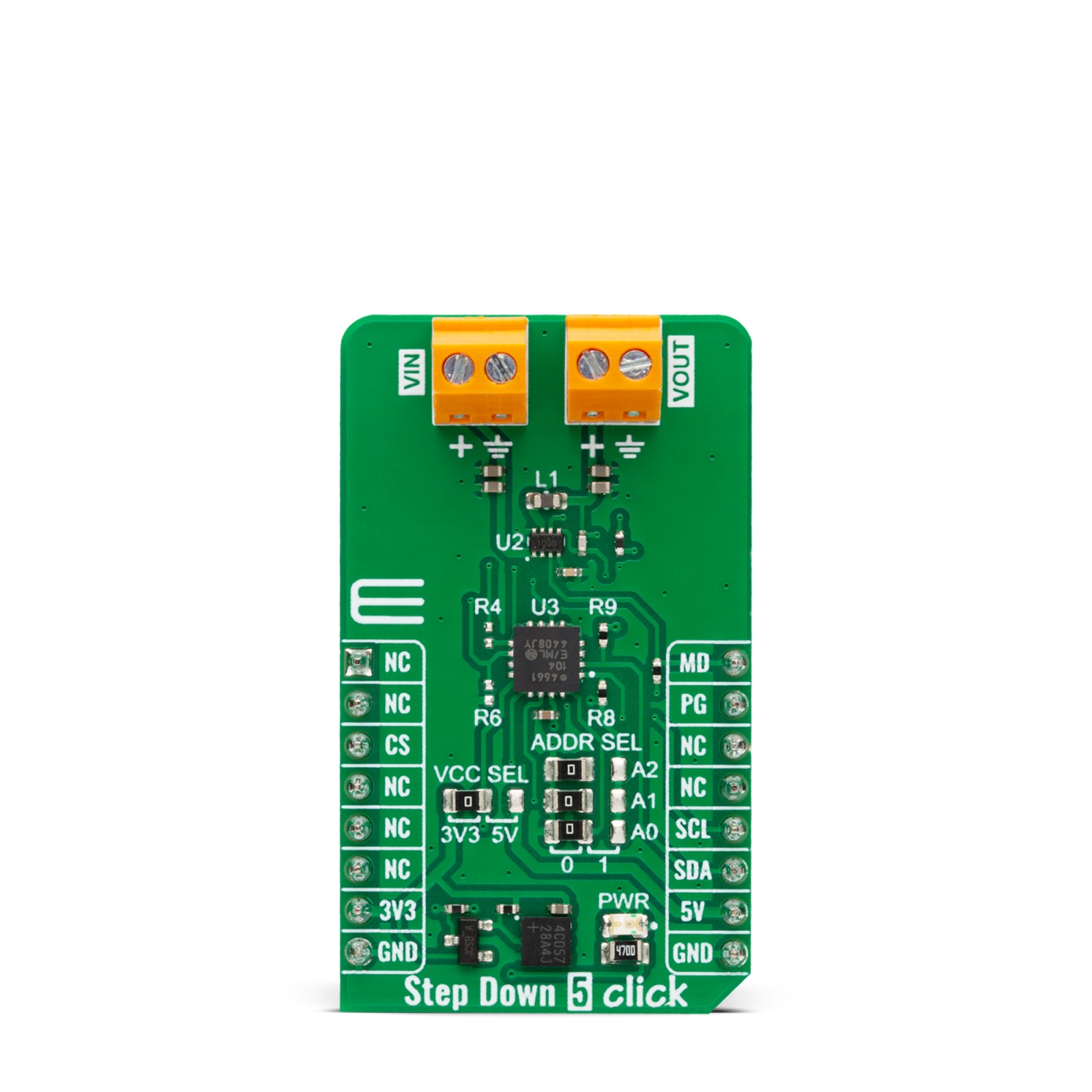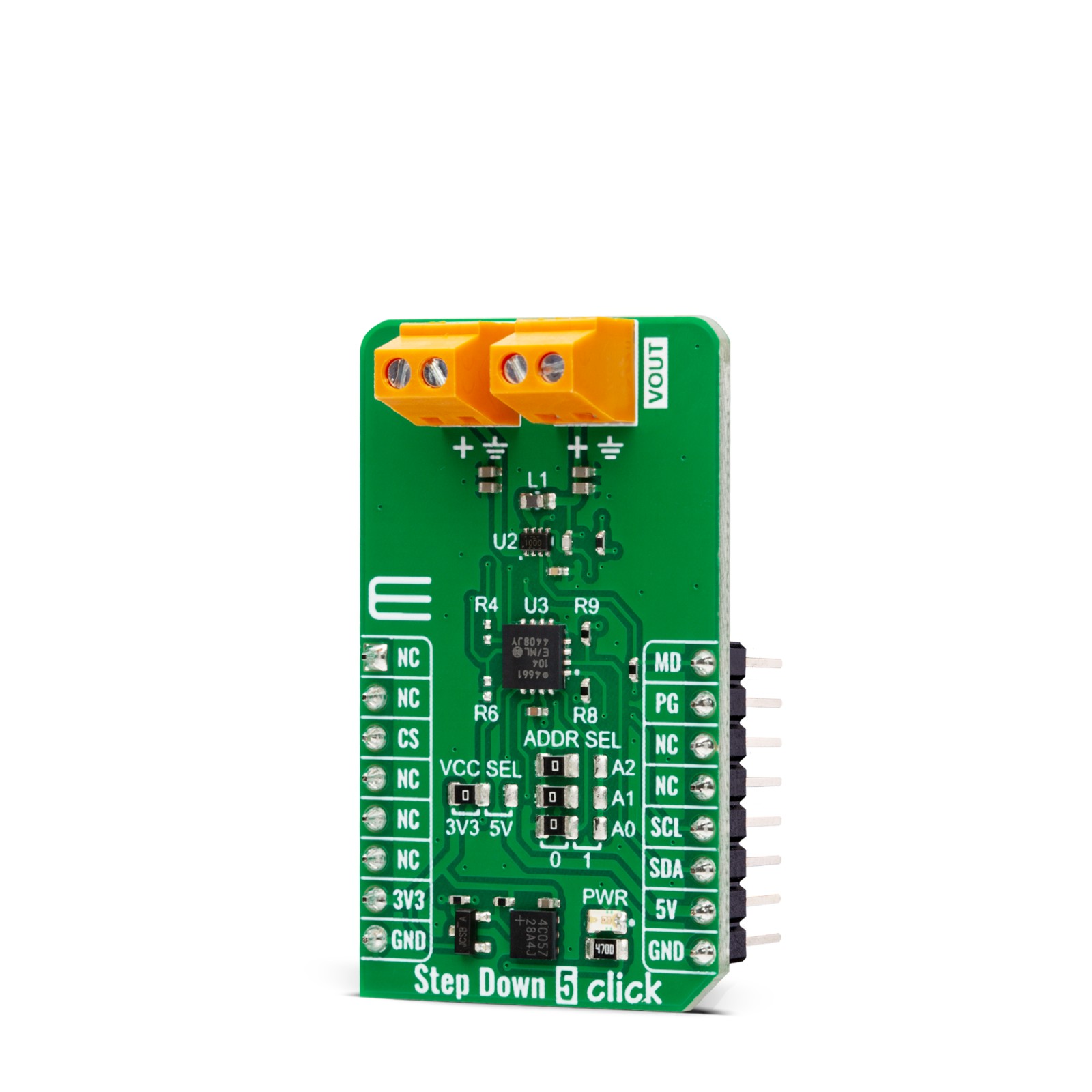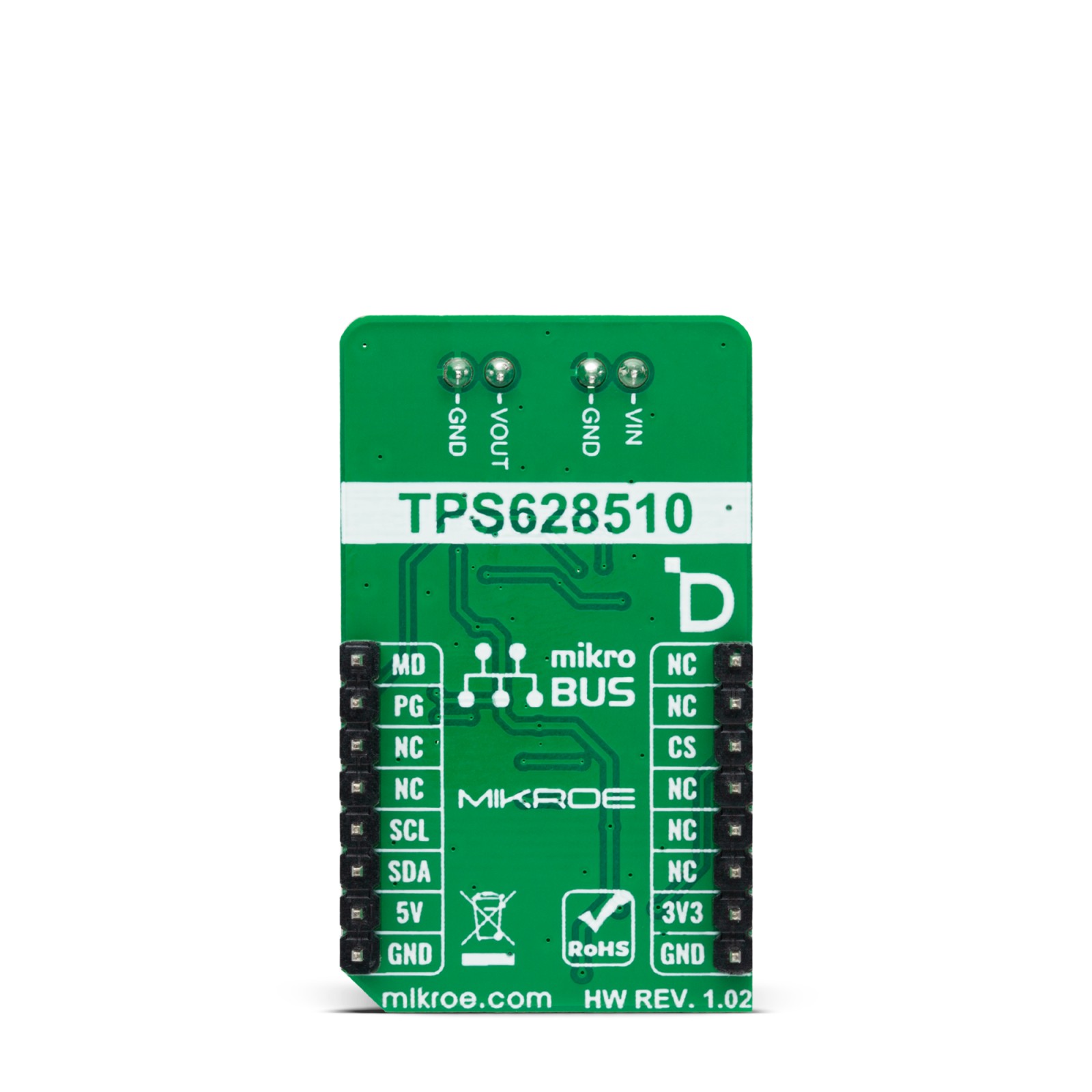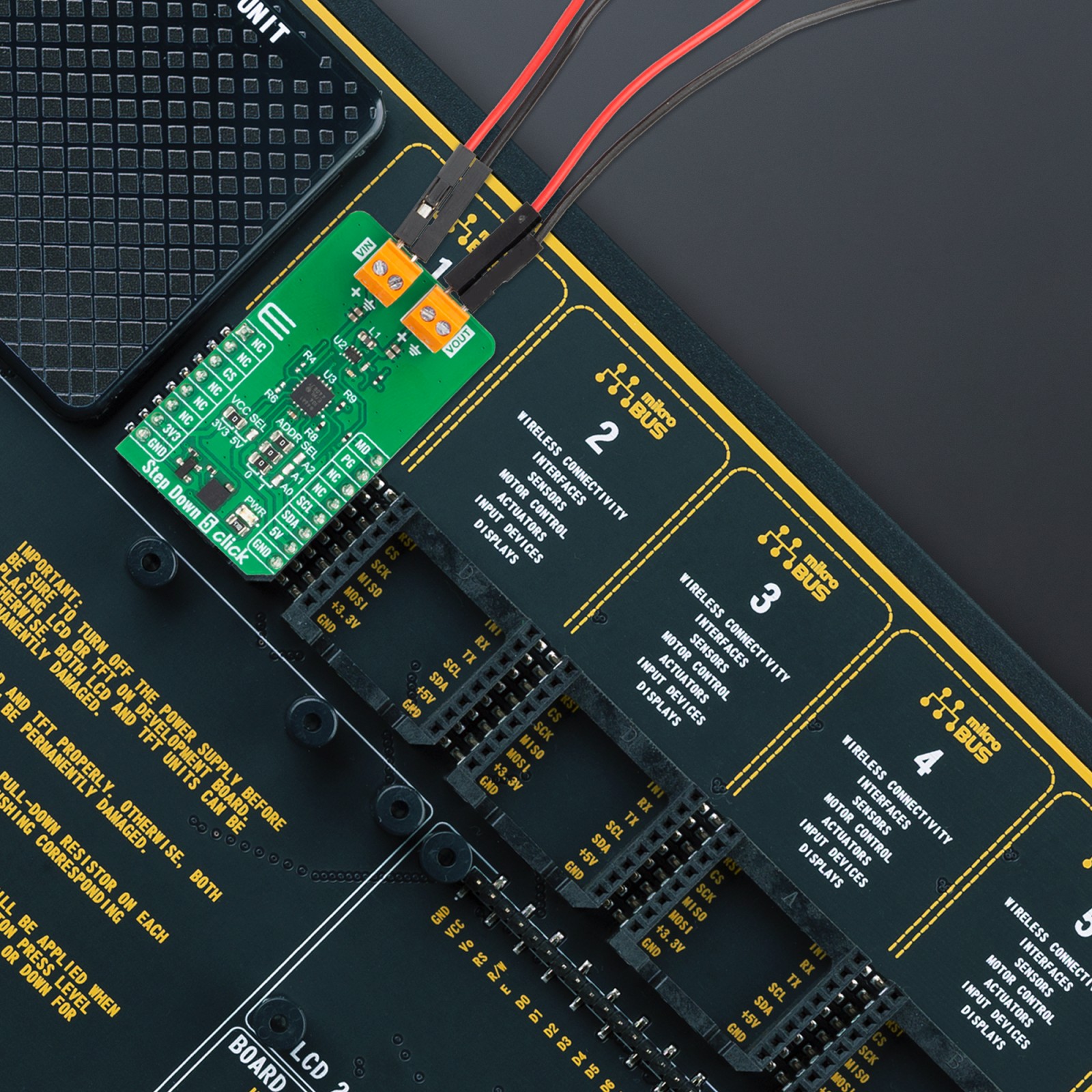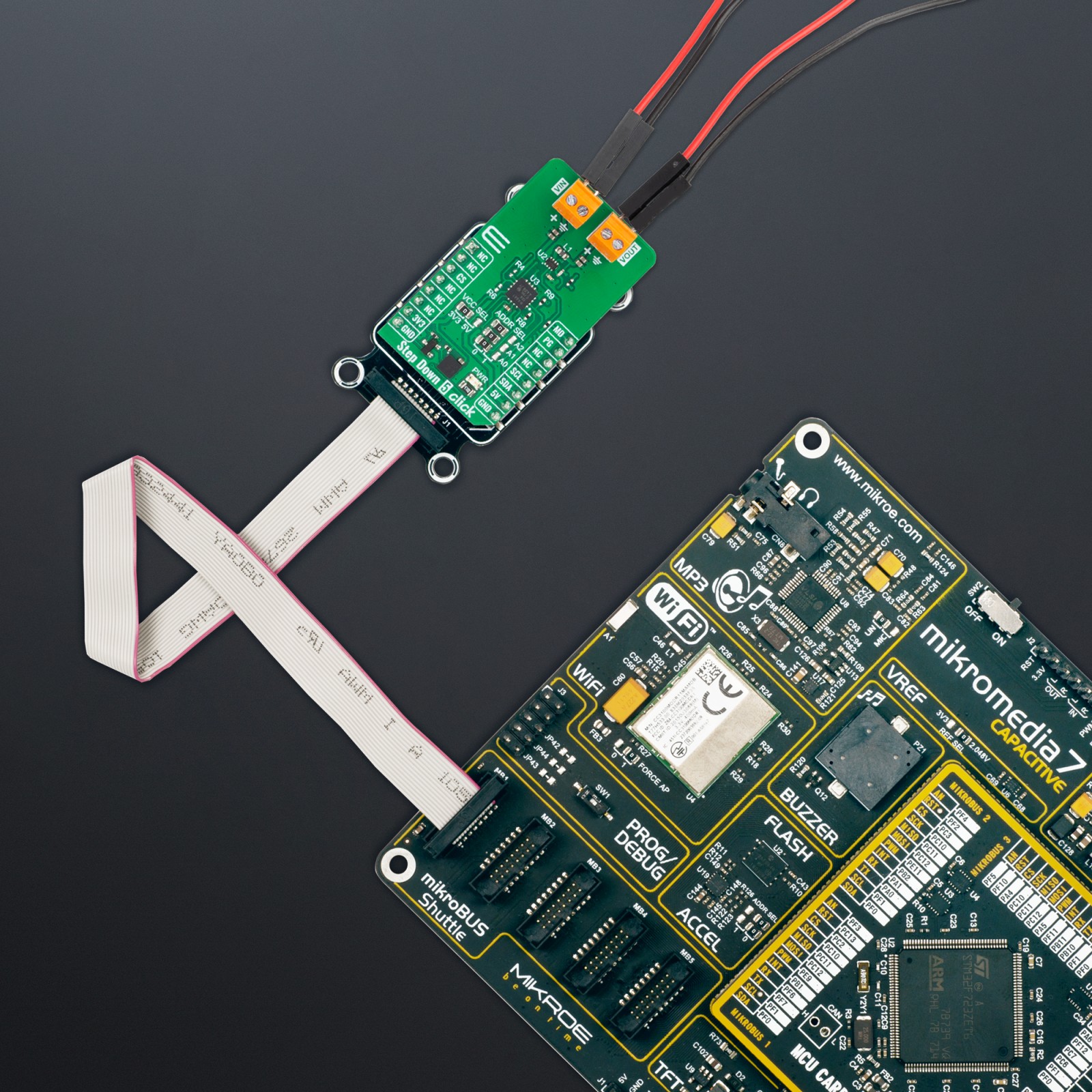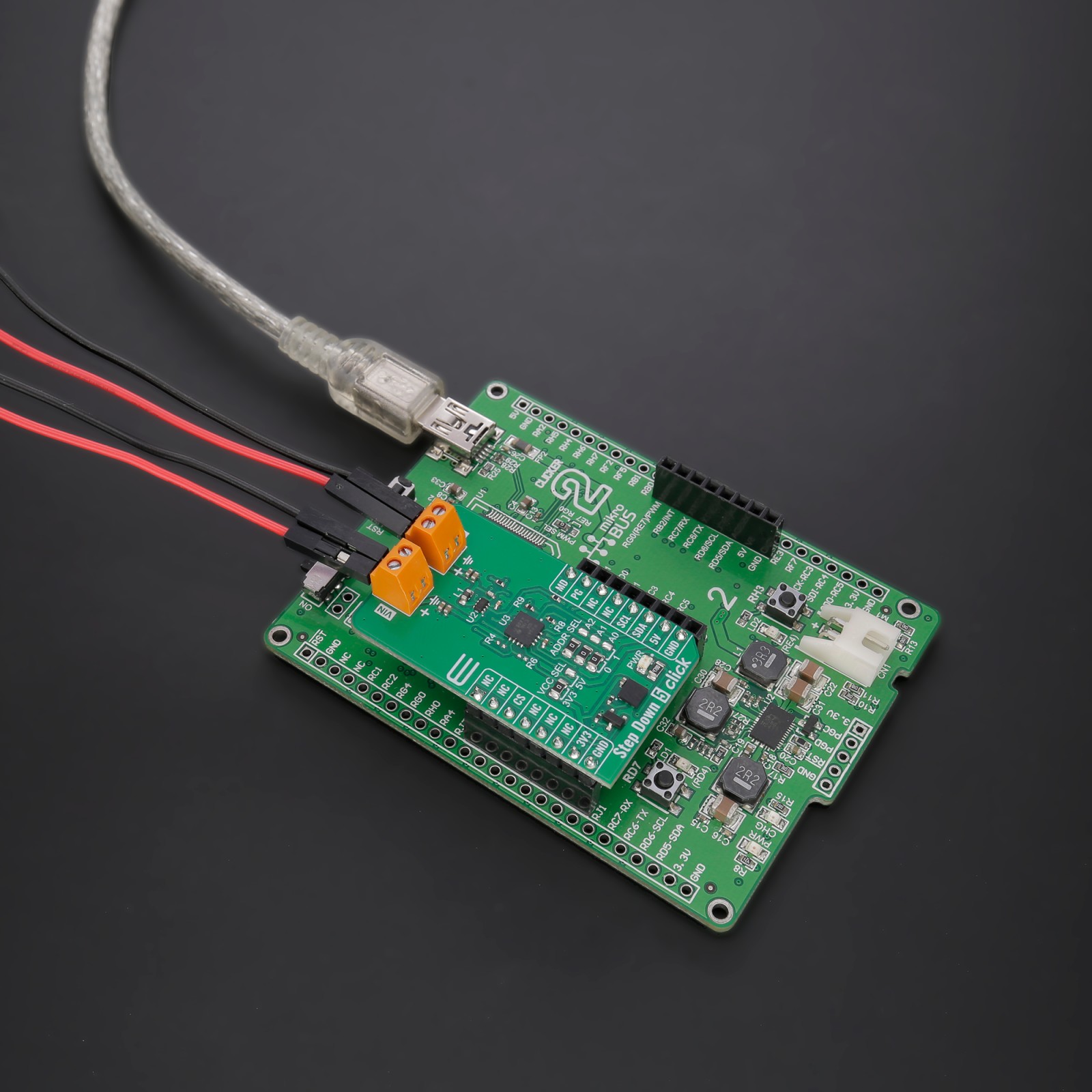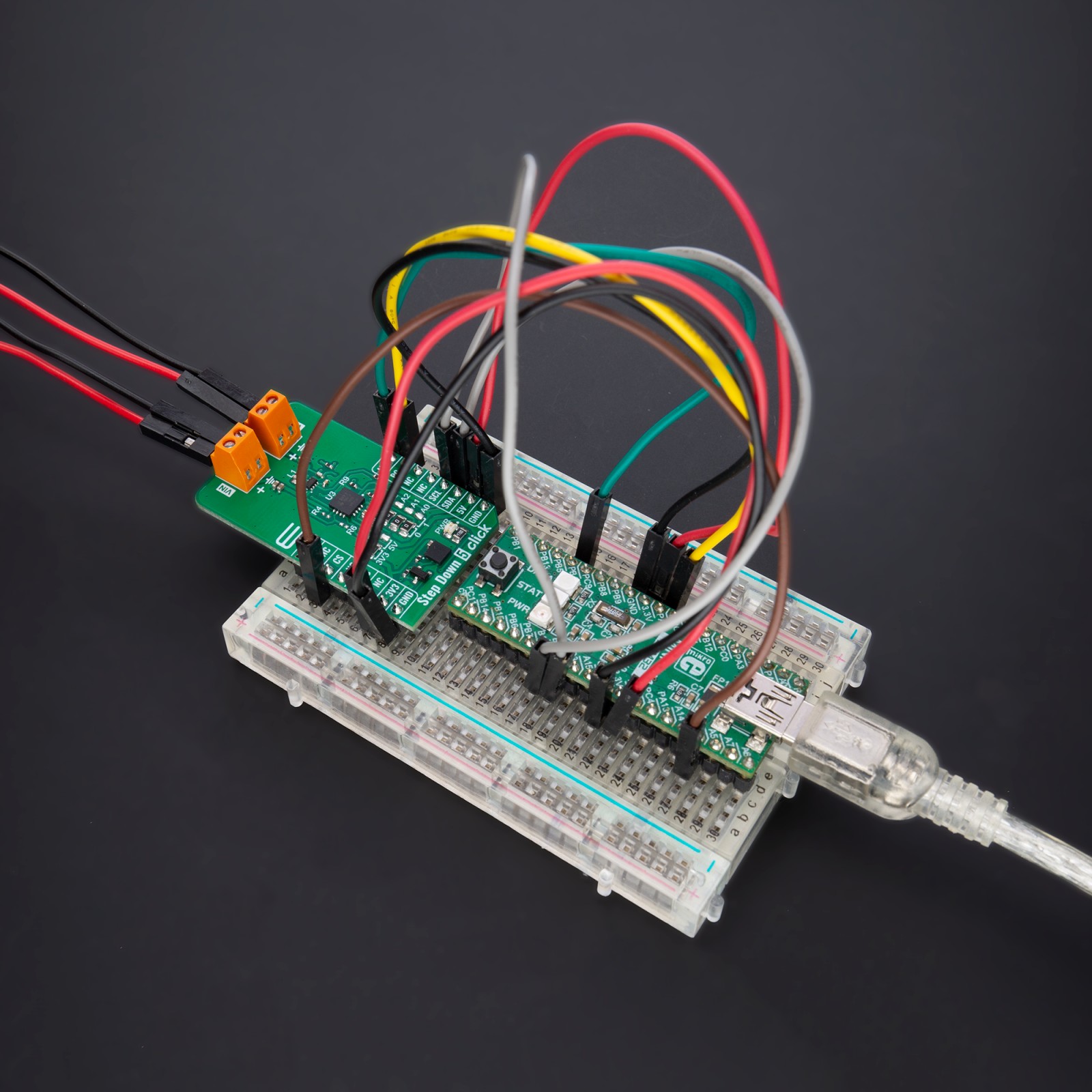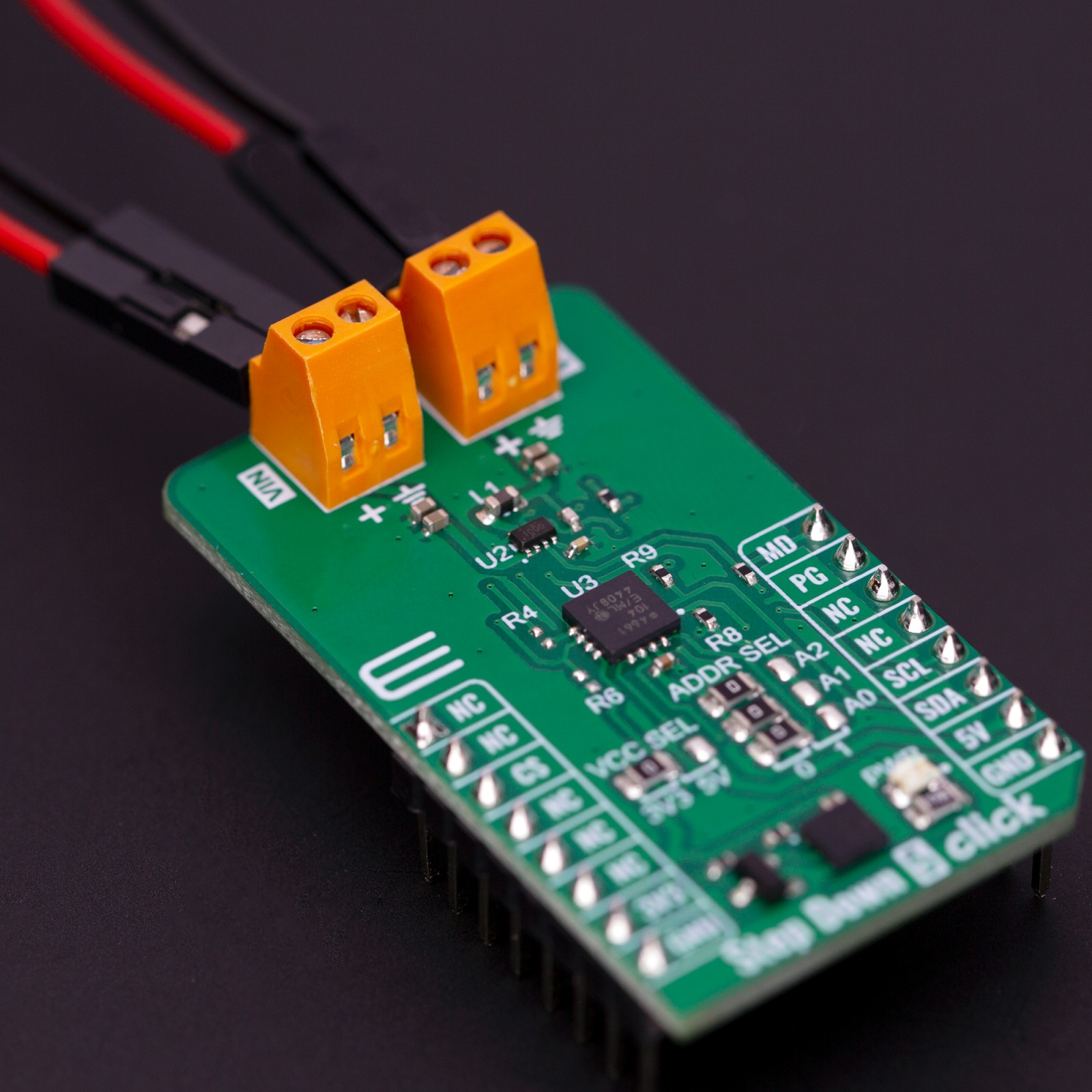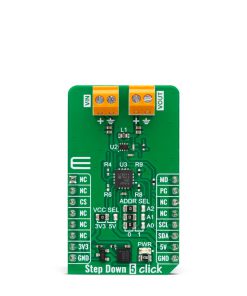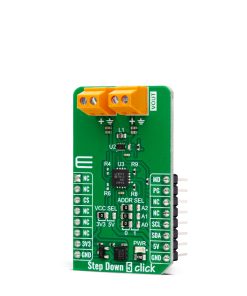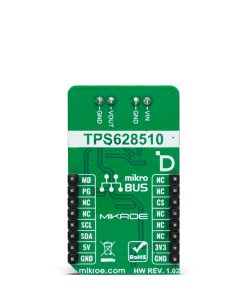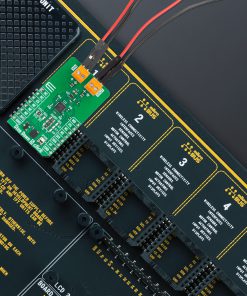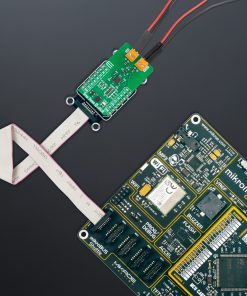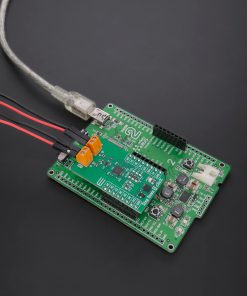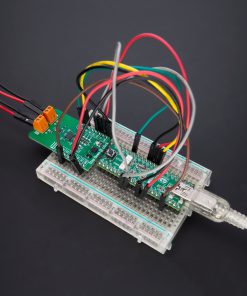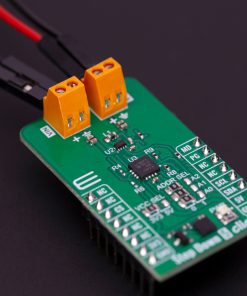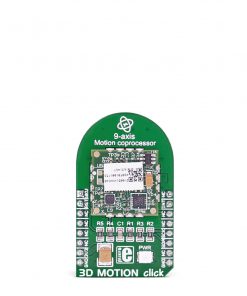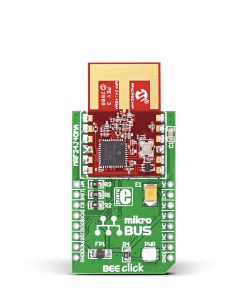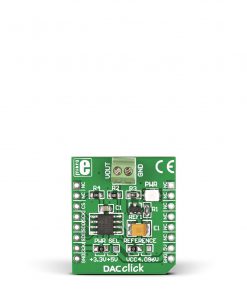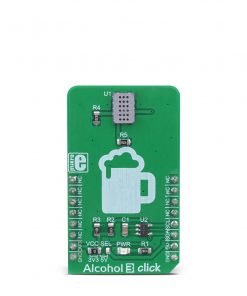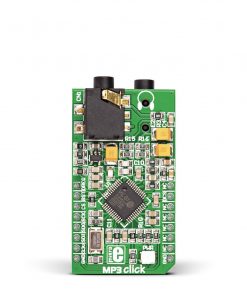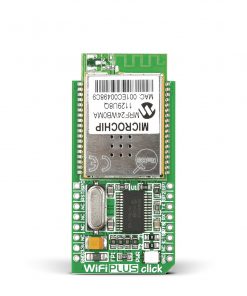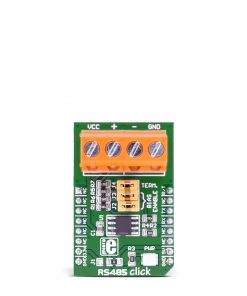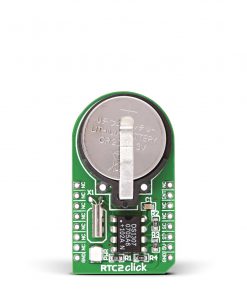Subtotal: R1,050.00
Step Down 5 Click
R330.00 ex. VAT
Step Down 5 Click is a compact add-on board that converts a higher voltage into a lower voltage level. This board features the TPS628510, a high-efficiency, easy-to-use, synchronous step-down DC/DC converter from Texas Instruments. The TPS628510 can provide up to 500mA output current with an input voltage ranging from 2.7V to 6V, specifically designed for applications where high efficiency is crucial. Its switching frequency is internally fixed at 2.25MHz, can select forced-PWM or PWM/PFM mode of operation, has selectable output voltage from 0.6V to 5.5V set via I2C-configurable digital potentiometer, and a Power Good signal to indicate stabilized output voltage. This Click board™ is suitable for power conversion solutions in automation and control applications, industrial sensors, test and measurement equipment, portable low-power devices, and more.
Step Down 5 Click is fully compatible with the mikroBUS™ socket and can be used on any host system supporting the mikroBUS™ standard. It comes with the mikroSDK open-source libraries, offering unparalleled flexibility for evaluation and customization. What sets this Click board™ apart is the groundbreaking ClickID feature, enabling your host system to seamlessly and automatically detect and identify this add-on board.
Stock: Lead-time applicable.
| 5+ | R313.50 |
| 10+ | R297.00 |
| 15+ | R280.50 |
| 20+ | R269.94 |

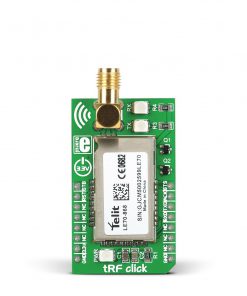 tRF Click
tRF Click 